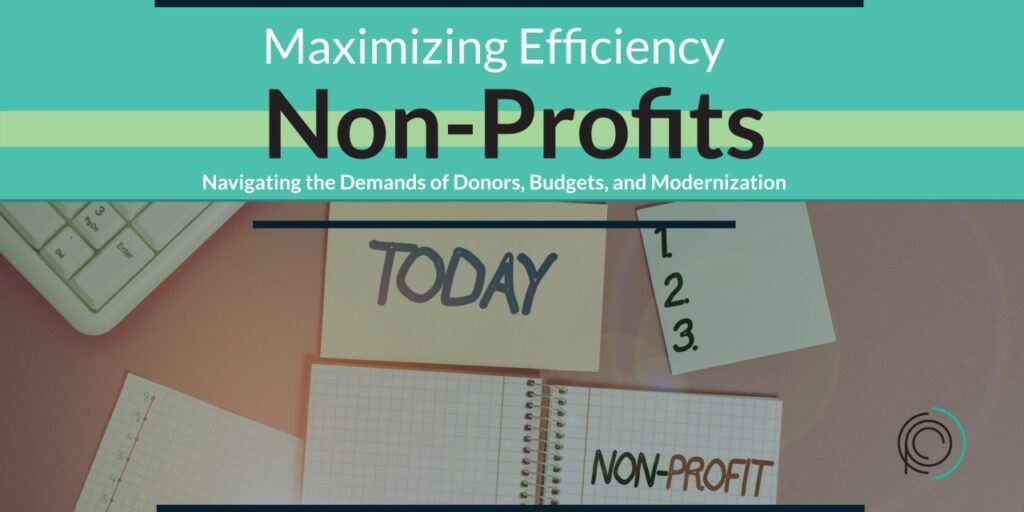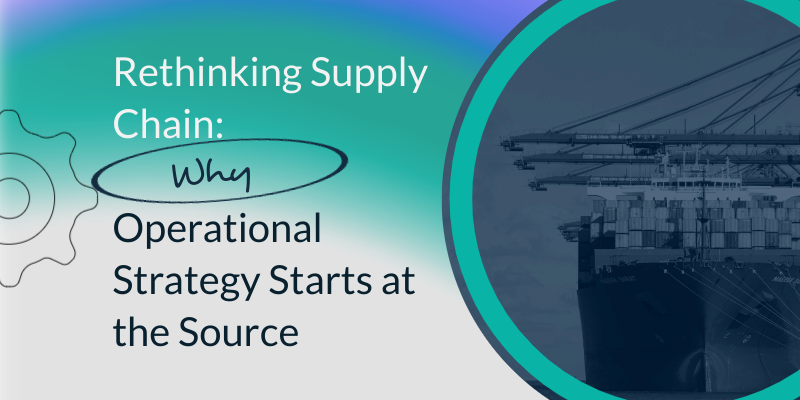Addressing the Challenges of Non-Profits
As non-profit organizations strive to make a positive impact and serve their communities, they face unique challenges in managing their business operations while working within limited budgets and meeting complex donor requirements. To effectively balance modernization and financial constraints, non-profits must implement efficient strategies that prioritize process improvement and balancing business goals to reach more clients. This requires effective change management and careful planning to ensure buy-in from stakeholders. In this article, we will explore the best practices and strategies for non-profits to navigate these challenges and maximize their impact.
The Importance of Efficiency in Non-Profits
Efficiency is crucial for non-profit organizations in order to maximize their impact and effectively utilize their limited resources. By implementing efficient strategies, non-profits can streamline their operations and achieve their goals in a cost-effective manner. Efficiency allows non-profits to serve more clients, expand their reach, and ultimately make a greater positive impact on society. Furthermore, being efficient helps non-profits meet complex donor requirements, as funders increasingly expect organizations to demonstrate the efficient use of their investments.
Balancing Modernization and Limited Budgets
To remain relevant and efficient, non-profit organizations must navigate the delicate balance between modernization and financial constraints. While integrating technology and digital tools can significantly enhance productivity, they often come at a substantial cost.
One effective approach for non-profits is to prioritize their investments based on the impact they will have on achieving organizational objectives. By conducting a comprehensive cost-benefit analysis, non-profits can identify which areas of modernization will yield the highest return on investment. This strategic allocation of limited resources ensures that initiatives with the greatest positive impact receive priority funding.
Striking a balance between embracing modernization and managing limited budgets is imperative for non-profit organizations seeking to uphold their relevance and effectiveness. By prioritizing investments wisely and leveraging collaborations with other entities, these organizations can harness technology effectively while minimizing excessive costs.
Understanding Complex Donor Requirements
In addition to balancing modernization and budgets, non-profits must also navigate complex donor requirements. Today, donors expect transparency and accountability in how their funds are used. Non-profits should thoroughly understand and comply with these requirements to build and maintain strong relationships with their donors. This includes providing detailed financial reports, impact assessments, and demonstrating efficient use of resources. Implementing effective donor management software can streamline this process, allowing non-profits to efficiently track and report on specific donor requirements. Furthermore, cultivating open and honest communication with donors can help nonprofits better understand their needs and tailor their approaches accordingly.
Efficient Strategies for Non-Profits
Managing donor expectations can be a challenging task, but it is crucial for the sustainability and growth of any non-profit organization. By adopting the following strategies, non-profits can streamline their operations while ensuring transparency and accountability to their donors.
1. Develop a comprehensive donor management system: Investing in a robust donor management system can help non-profits track and organize donor data effectively. This software can assist in managing donor communications, tracking giving patterns, and monitoring compliance with donor requirements.
2. Create clear and concise reporting mechanisms: Donors appreciate transparency and regular updates on how their funds are being utilized. Non-profits should establish a reporting framework that clearly outlines the information and format expected by donors. This will not only demonstrate accountability but also foster stronger relationships with donors.
3. Conduct regular impact assessments: Non-profits must demonstrate the impact of their work to donors. By regularly assessing and documenting the outcomes of their programs, non-profits can provide evidence of their effectiveness and attract continued support from donors.
4. Tailor communication channels: Engaging with donors through their preferred communication channels can help strengthen relationships. Non-profits should invest in understanding the communication preferences of their donors and adapt their outreach efforts accordingly.
Leveraging Technology for Streamlined Operations
Leveraging technology is essential for non-profits looking to effectively manage complex donor requirements while maintaining efficient operations. By incorporating modern tools and systems into their processes, non-profits can streamline their operations, maximize productivity, and ensure transparency and accountability.
One technology that can greatly benefit non-profits is cloud-based software. This allows organizations to store and access important documents and data securely, from anywhere and at any time. With the ability to collaborate on documents and store donor information safely, non-profits can effectively manage donor requirements and maintain accurate records.
Donor management software can automate many administrative tasks, such as tracking donations, managing communication workflows, and generating reports. By investing in a reliable donor management system, non-profits can streamline their operations and ensure compliance with complex donor requirements.
They can leverage social media and online platforms to expand their reach and engage with donors. By maintaining an active online presence, organizations can share updates, success stories, and impact reports with donors in a timely manner. This not only helps to keep donors informed but also creates a sense of community and encourages continued support.
In the following section, we will dive deeper into these technological strategies, providing practical tips and examples of how non-profits can balance modernization and budgets while effectively managing complex donor requirements.
Monitoring and Reporting for Transparency and Accountability
Monitoring and reporting are essential aspects of maintaining transparency and accountability in non-profit organizations. Donors want to know how their contributions are benefiting the cause, and it is crucial to provide them with clear and timely updates.
To ensure effective monitoring, non-profits should establish systems for tracking and evaluating their programs and initiatives. Regularly collecting and analyzing data allows organizations to measure progress and make data-driven decisions. This information can then be used to generate comprehensive reports that highlight the outcomes achieved and the impact of donor contributions.
When it comes to reporting, non-profits need to strike a balance between providing detailed information and keeping it accessible and understandable for donors. Use clear and concise language to explain the progress made and the challenges faced. Visual aids such as graphs and infographics can help convey complex information in a more digestible manner.
In addition to regular reports, consider leveraging technology to provide real-time updates and insights. Utilize online platforms, social media, and email newsletters to keep donors informed and engaged. By embracing technology, non-profits can efficiently communicate with donors and prove their dedication to transparency and accountability.
Maintaining transparency and accountability is not only necessary for building strong relationships with donors but also for attracting new supporters and partners. Non-profits that prioritize monitoring and reporting demonstrate their commitment to making a positive impact and inspire confidence in their donors.
Navigating the Path to Success in Non-Profit Management
Efficient monitoring and reporting are crucial for non-profit organizations to maintain transparency and accountability. By establishing systems for tracking and evaluating programs, non-profits can measure progress and make data-driven decisions. Clear and concise reporting, along with the use of visual aids, ensures that donors can easily understand the impact of their contributions. Leveraging technology through online platforms and social media allows for real-time updates and engagement with donors, further strengthening transparency and accountability. Prioritizing monitoring and reporting not only builds strong relationships with existing donors but also attracts new supporters and partners. Moving forward, non-profits can maximize their outreach and engagement efforts by implementing innovative marketing strategies. If you would like additional information on how you can modernize your business operation, book a consultation with one of our experts today.







